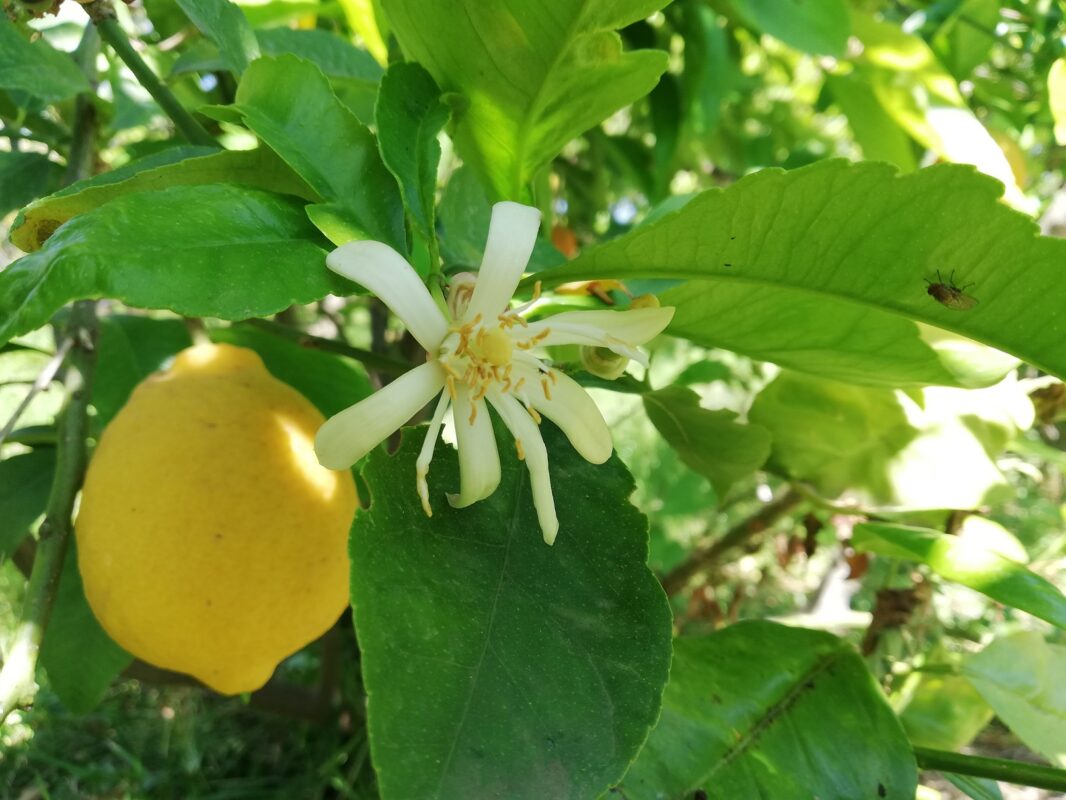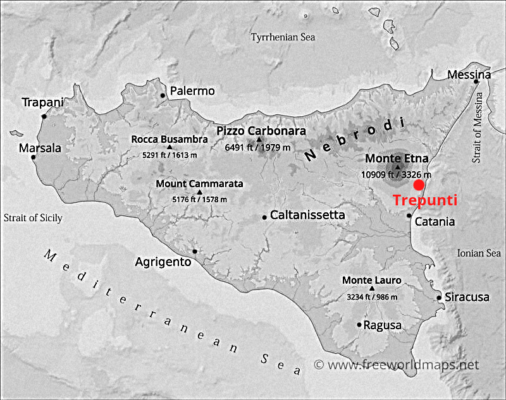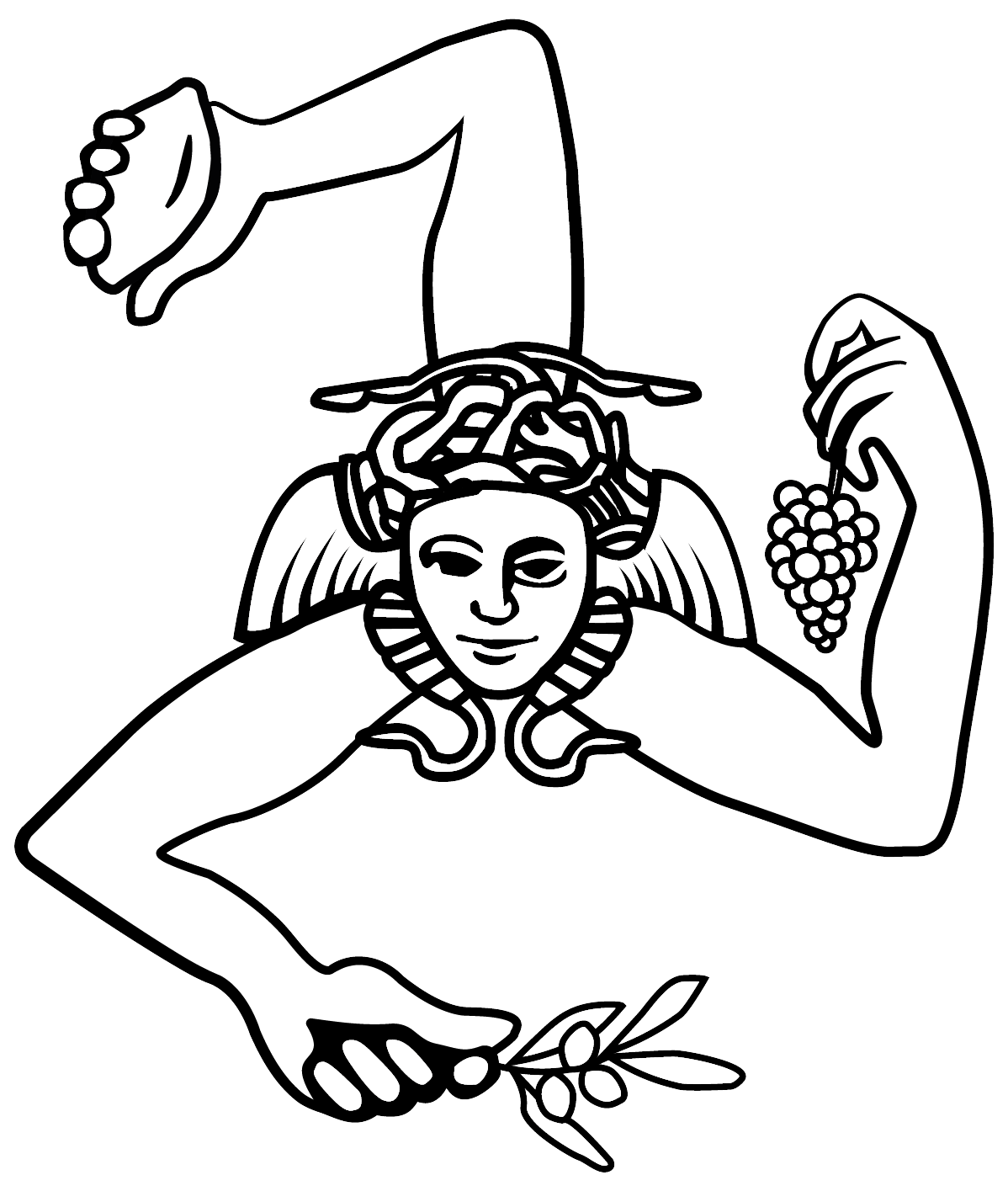Food, Sicilian Lemon
Lemon of Etna (Limoni dell’Etna) from Trepunti

There is a saying in Sicilian,
‘Lemons are not lemons unless they are Sicilian!’
Sicily produces over 80% of lemons in Italy. Yes, there are different regions in Italy producing lemons, like in Sorrento and Amalfi coast. But over 80% of lemons produced in Italy are coming from Sicily! The reason is simple- no better place can offer a better climate than Sicily for enormous, fragrant and juicy lemons. It is true the Sicilians have all the right to this claim! It is hard to define Sicilian lemons in a few words. Sicily lemon is definitely a world to be discovered and explored!
Let’s begin.
Not all Sicilian lemons are created equal
What is your first impression of Sicilian lemons? Vibrant yellow, enormous, fragrant or all the above?
Sicilian lemons are famous for their spectacular size and intense fragrance. Being an island in the southernmost of Italy, enjoying the Mediterranean mild weather, the coastal regions in Sicily are just ideal for growing spectacular lemons. Sicily produces lemons almost all year round except for late summer when it hits the very low season awaiting for the new season to begin.
But Sicilian lemons are not just Sicilian lemons
First, there are different varieties, Monachello, Femminello, Interdonato, then there are different seasons, Primofiore (a vibrant yellow type harvest in autumn/winter), Bianchetto (a pale yellow type harvest in spring) and Verdello (a green type harvest in summer). It sounds mind boggling enough, right? The story does not end here!
Locality is the key, not just ‘Made in Italy’
As many Italian products, locality is a big thing. Within Italy, the phrase ‘Made in Italy’ does not mean much other than the baseline of quality. Italians not only know their products by heart, but also hold pride for them, in this case, the Sicilians. Within Sicily, there are already 3 IGPs*.for Sicilian lemons-Il Femminello di Siracusa, Limone Interdonato di Messina, and Limone dell’Etna. Now we are going to have a look at their differences.
Geography of Sicily
To understand the difference among Sicilian lemons, a bit of geography of Sicily would help.

The region of Sicily is 25 times bigger than Hong Kong and divided into nine provinces: Palermo (the regional capital), Trapani and Agrigento in the west, Caltanissetta and Enna in the centre and Ragusa and Siracusa in the south, Catania in the east and Messina in the north.
Different regions have their traditional crops and specialty. Mainly on the coast of the oriental Sicily (Eastern part), the lemons thrive. The 3 most popular zones are
1. Limoni dell’Etna from Catania, Mount Etna is in the region of Catania, the coastal strip in the east coast.
2. Il Femminello di Siracusa, in the south coast of Sicily
3. Limone Interdonato di Messina, in the North coast
What are the differences among those 3 IGP lemons?
It is true that all the lemons are similar in appearance. So what are the differences?
Looking at the map of Sicily, you can see the production zones are stretched from South to North where you can imagine the microclimates vary. The Souther, the hotter; the Norther, the cooler. The warmer temperature will favour more lemons production but at the same time, not too hot, otherwise lemon trees suffer.
Siracusa, Etna and Messina
The North has a boutique production of a crossbred of lemon and citron, it is called Interdonato di Messina which is not ‘pure’ lemon and has a slightly sweeter profile. The South has the most commercialised lemon- Femminello di Siracusa which is famous for its fragrance. The East has the Limone dell’Etna, which is famous for its high content of antioxidants and mineral salts.
Soil is what matters
After all, if you are not an expert, it is not easy to tell the organoleptic difference among different Sicilian lemons. So why did I take this length to explain all about Sicilian lemons? Because the location makes a difference to your lemons!
As you can see in the Map of Sicily, the main difference is geographical locations which create different micro-climate and soil conditions for the lemons. Limoni dell’Etna are at the foot of Mount Etna on the east coast, they are grown in volcanic soil, which is guaranteed rich in minerals and antioxidants. Naturally, if you are going after lemons for your health (as a keto-dieter, vegan, with high blood pressure or just for skincare or weight control), you would land one of the best. Logically, your choice will be Limoni dell’Etna, the volcanic lemons.
The hidden gem-Limone dell’Etna
Limone dell’Etna IGP is not as ‘famous’ as the other 2 IGP lemons. The truth is, it is all about marketing. As I have mentioned, ‘Made in Italy’ means more to foreigners than local Italians. The same token applies to IGP. It is not difficult to understand that the local people do not need the IGP trademark as a guide to shopping. Everyone has their local source of everything (at least in South Italy), from formaggio (cheese) to vino (wine). Who would challenge the quality of lemons in the volcanic zone of Etna! This also reflects that Etna is the zone more traditional than the other zones because new markets (Siracusa and Messina were relatively newer than Etna zone) need more marketing tools to emerge, this is the modern business rule. Nowadays, quality products are not enough to sell, it takes skillful marketing instead. Thus, to catch up with this game, some producers made a great effort to get Limone dell’Etna IGP granted in 2020.
Use lemons like a Sicilian
Lemon is not a table fruit, it seems its use is limited but the reality is the contrary inside Sicilian kitchen. Lemon is just versatile, even beyond kitchen. You can use the fresh juice for lemonade, for tisane, for detox purifying drinks, for lemon honey water cold remedy, for digestive drink with the peel, for salad dressing, sauce for fish and meat,-the famous Sicilian tradition is Salamarigghiu (fresh lemon juice, olive oil, oregano, salt & pepper), for making limoncello, for making lemon marmalade. The list goes on… Sky is the limit on its use! But it has to be a Sicilian lemon!
Lemon is a key to Sicilian culture
Lemon is the symbol of Sicily. Sicilian lemon has its ups and downs throughout the years, from being brought by the Arabs in the 11th century to being controlled by the Mafia in the last century. You cannot love Sicily without loving Sicilian lemons. Under globalization, it is not easy to keep the traditional way of farming and living at the same time.
For example, in our zone, Trepunti, near Mount Etna, lemons are everywhere. It is heart-breaking to see more and more limoneto (lemon groves) abandoned. Yet, many of our friends who have a piece of inherited limoneto are trying their best to keep it thriving. My husband is one of those who loves Sicilia (Sicily) which he takes a challenging path to inherit and bring life to his family farm.
If life gives you a lemon, make sure it is a Sicilian lemon!
I cannot show you more Sicilian culture than I could in one article, but I hope you can feel our passion, our love towards Sicily and Sicilian lemons. We are trying to tell the world the beauty of Sicily and her world finest lemon. I am sure you will be with us to keep this tradition alive- Viva la Sicilia!
